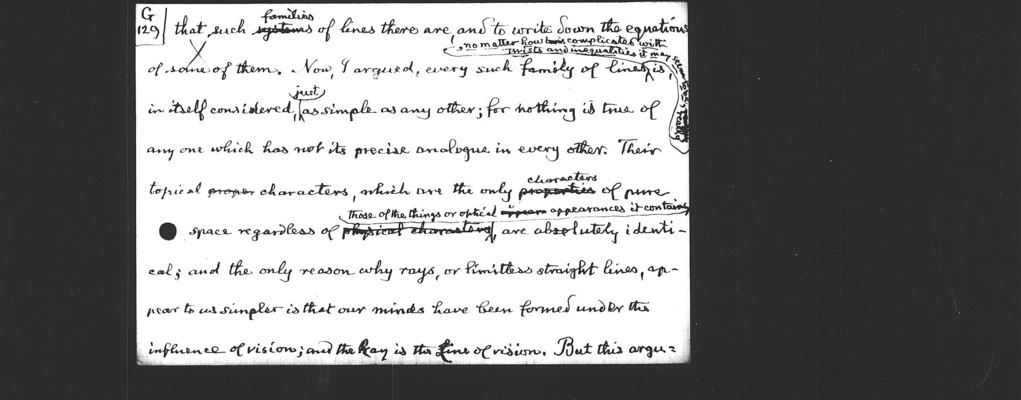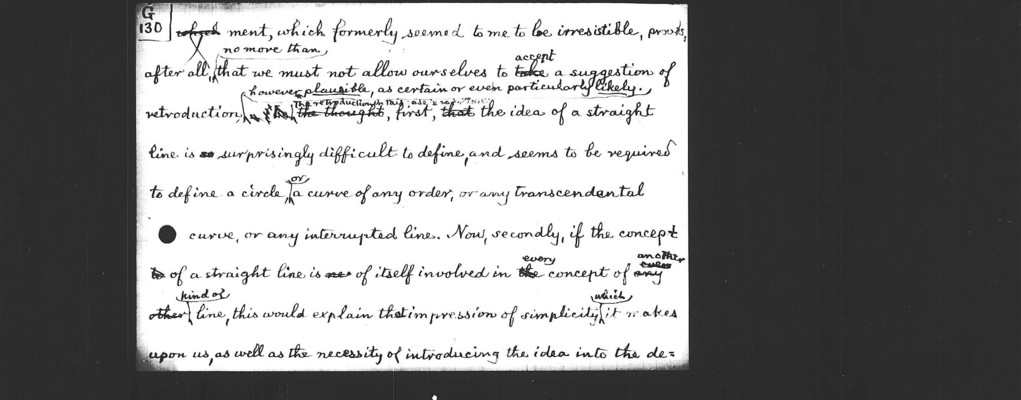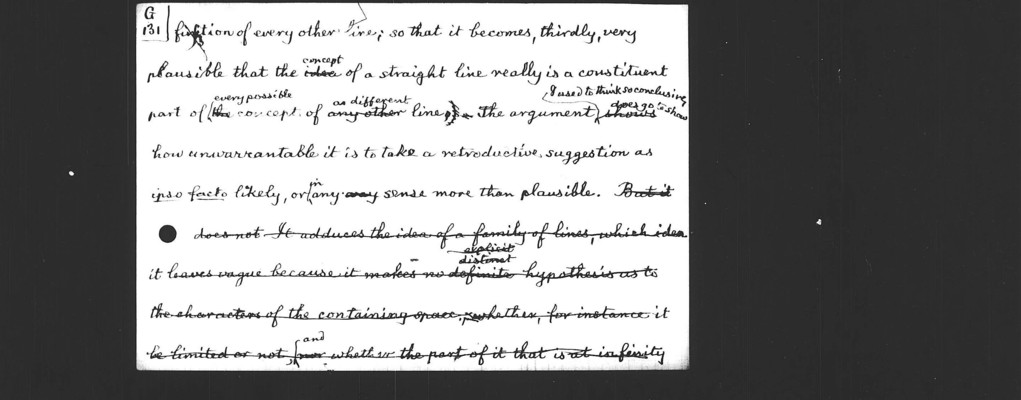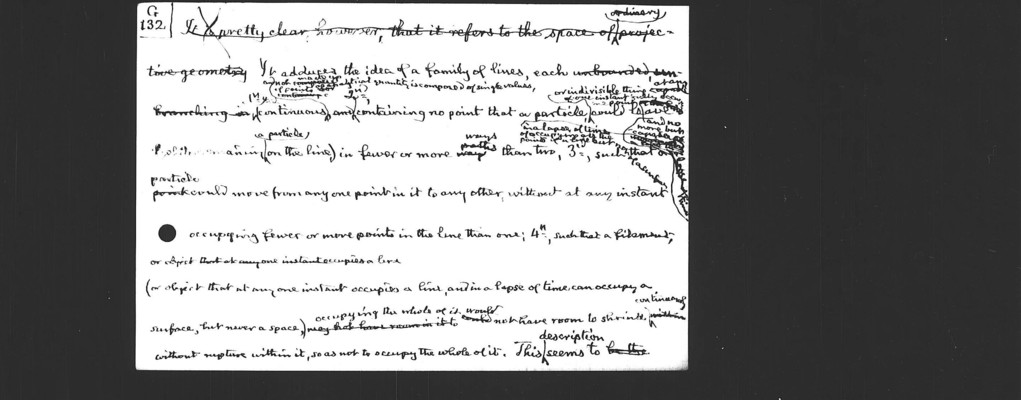Pages
151
G129
that such families of lines there are, and to write down the equations of some of them. Now, I argued, every such family of lines, no matter how complicated with twists and inequalities it may seem to be, really is in itself considered just as simple as any other; for nothing is true of any one which has not its precise analogue in every other. Their topical characters, which are the only characters of pure space regardless of those of the things or optical appearances it contains, are absolutely identical; and the only reason why rays, or limited straight lines, appear to us simpler is that our minds have been formed under the influence of vision; and the Ray is the Line of vision. But this argu-
152
G130
ment, which formerly seemed to me to be irresistible, proves, after all, no more than that we must not allow ourselves to accept a suggestion of retroduction, however plausible, as certain or even particularly likely. The retroduction in this case is as follows, first, the idea of a straight line is surprisingly difficult to define, and seems to be required to define a circle or a curve of any order, or any transcendental curve, or any interrupted line. Now, secondly, if the concept of a straight line is of itself involved in every concept of another kind of line, this would explain that impression of simplicity which it makes upon us, as well as the necessity of introducing the idea into the de-
153
G131
finition of every other line; so that it becomes, thirdly, very plausible that the concept of a straight line really is a constituent part of every possible concept of a different line. The argument I used to think so conclusive does go to show how unwarrantable it is to take a retroductive suggestion as ipso facto likely, or in any sense more than plausible.
154
G132
It addresses the idea of a family of lines, each 1st, continuous and not made up of points as analytical quantity is composed of single values, 2nd, containing no point that a particle or indivisible thing at any one instant fully occupy one point and no more but capable in a lapse of time of occupying all the points of a line but not of a surface could have while remaining a particle on the line) in fewer or more ways than two, 3rd, such that a particle could move from any one point in it to any other, without at any instant occupying fewer or more points in the line than one; 4th, such that a filament, (or object that at any one instant occupies a line, and in a lapse of time can occupy a continuous surface, but never a space,) occupying the whole of it would not have room to shrink continuously without rupture within it, so as not to occupy the whole of it. This description seems to
155
G133
include all the characters that are common to every line of the described family and which belongs to each line in itself considered. Yet I should have much sympathy with a mind that should doubt this, inasmuch as the description applies to every oval, or simple self-returning line. For the motion of a particle along such a line until it returns to its original point on any one of the lines of the family is related to the motion of a point along ordinary ovals until it returns to its place precisely as the simple turning over of the common plane of two sheets of paper that are stuck together, so as to bring that plane of separation back to its original place, is related to a complete revolution of [a] pair of sheets. Suppose, Reader, take a yard of ribbon of paper, for example, and mark with lead pencil a line along the middle of one side of it, and then simply turning over one end of the ribbon, so paste the two ends together so that upon one end having the mark on its upper side shall be pasted down the other end with the mark upon its lower side (so as to bring not merely the two ends of the ribbon




